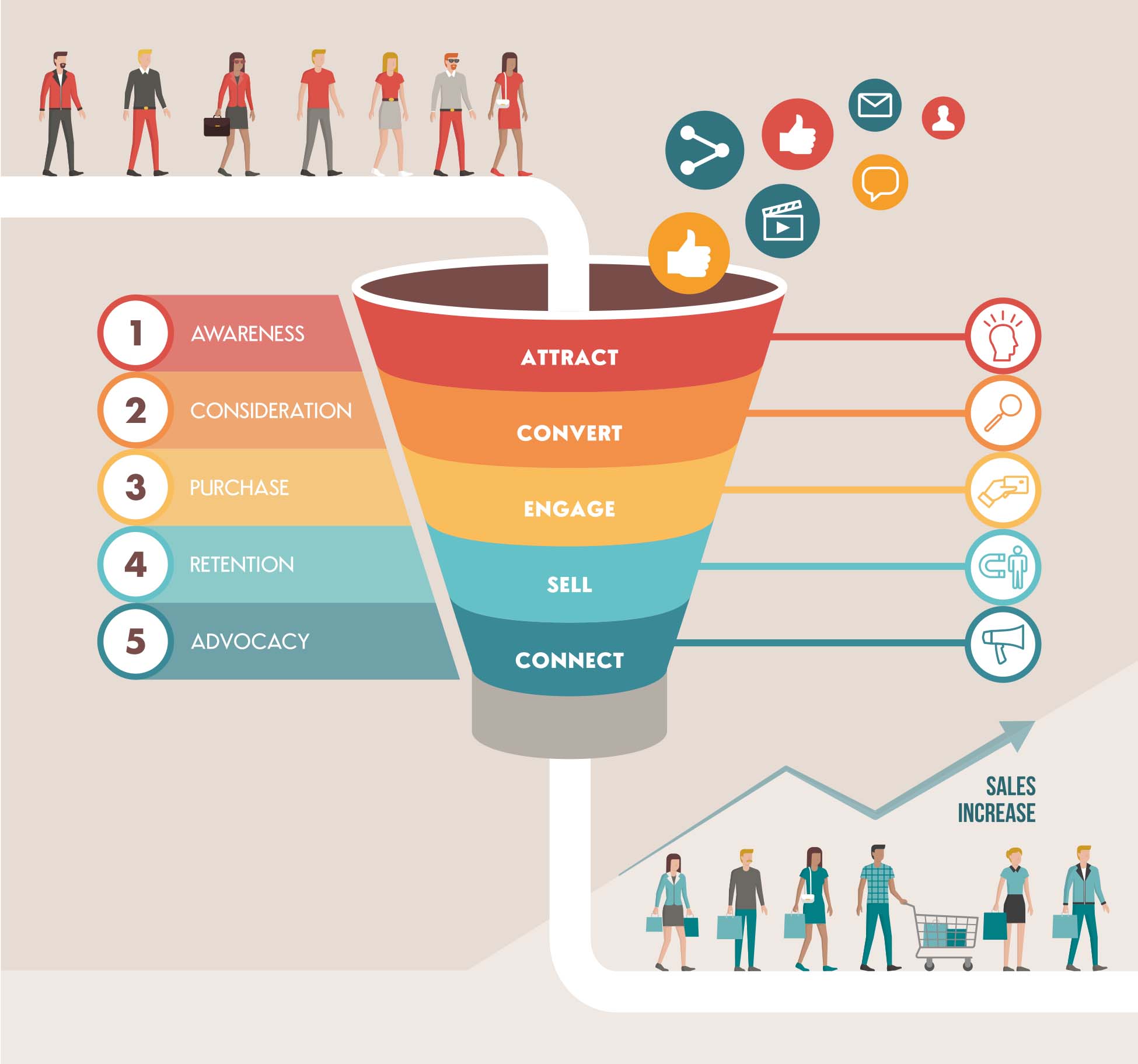Prospecting Prospects: The ABCs of How to Start
In 1936, Dale Carnegie wrote “How to Win Friends and Influence People,” which at its basest synopsis is about being likable to be a better salesperson. He proposed six lessons: Be interested in what they say, smile, remember the person’s name, be a good listener, talk about their interests, and be sincere. Sound advice, and one that has stood the test of time.
When identifying potential customers and developing a database of likely customers, there are a series of considerations you need to factor in, such as how clean your data is. How do you integrate social media into your prospecting? What are the best practices for communicating with prospects and converting them from potential customers to current clients? However, sales prospecting and marketing are not the same. In prospecting, you create a strategy to actively look for clients, whereas in marketing, you develop a strategy to get the client to come to you. Both feed off of each other, but their approach is different.
Prospecting ABCs
The object of prospecting is to identify a contact and move that potential client through the five levels of the digital marketing funnel–Awareness, Consideration, Purchase, Retention, and Advocacy.

However, when it comes to this marketing pipeline, there is a steadfast rule to keep in mind: All prospects are leads, but not all leads are prospects.
Step Number One:
Assertive ResearchRegardless of the vertical you target, the product you represent, or the size of your company, the first and foremost step is research. Knowledge is king and the more you know about your targets, the market, how your product will solve a problem, and how to best approach your prospects, the more successful you will be. And don’t forget to study, analyse, and get to know your competitors–especially their blog posts.
Here’s a tip for those getting started with prospecting and developing their business: Attend an industry conference, not as a vendor, but as a spectator. Get to know the people, the services, the products, and the companies, and pay attention to their pitches, their solutions, and their game plan.

Step Number Two:
If You Build It (the list), They Will ComeNo salesperson can prospect if they do not have a list of targets, right? Whether purchasing B2B sales lead lists, having a marketing department or a sales team whose job is to prospect, or mining social media (such as LinkedIn), one thing must stand out: One needs clean data–vetted and verified information that the contact is valid. And in today’s job climate (i.e., The Great Resignation), that is no easy task.
Yet, what is clean data? It is accurate, up-to-date information with all the necessary fields and contains no duplicate information or errors. The Learning Experience Alliance (formerly MarTech Alliance) reported that “between 2019-2021, over 40% of sales reps didn’t have enough information about their leads to make effective sales.”Lastly, salespeople have to make the distinction between outbound and inbound prospecting. Simply put, outbound is when one proactively approaches prospects (cold emails, cold calls, etc.). Inbound is when they have already engaged (warm emails, social selling, etc.)

Step Number Three:
Step Number Three: Initiate the ConversationThe next step is the pitch. Actually, rather than a sales pitch, let’s call it a dialogue. That’s what salespeople want: To engage in conversation. When crafting a message, keep two things in mind. First, the introduction, and second, the first line. If the message doesn’t grab their attention, the prospect will not show interest in the product.
The introduction is the subject line when sending a cold email. Industry experts state that the best subject line is seven words or less and it should be personalized (either the client’s name, company name or the mention of a pain point). The first line needs to be direct and to the point. Keep in mind that these people receive hundreds (if not thousands) of emails and all are vying for their attention. They neither have the time nor the interest to go through each one to find the one they need. The same applies to cold calls. It all boils down to the first words. One is more likely to get results when addressing a pain point and how the company (or service) can solve it. After that, the sales message can be delivered. But it is imperative to get past the target audience’s initial disinterest.Lastly, when targeting, keep an eye on award and accomplishment news as this is a formidable icebreaker and an effective tool for engagement. If you can relate your product (or service) to their news, you can find common ground, and the conversation will flow. If the prospect engages, lead the conversation toward common pain points associated with their accomplishment, then demonstrate how your product (or service) can solve their challenges. Thus, you prove how you are a valuable resource.

There’s a Wealth of Data in Social Media Prospecting
Social prospecting is a potent tool. According to HubSpot, 75% of executives use social media platforms to help make buying decisions. Trigger-ready prospects are abundant in social media. Research shows that 74% of consumers rely on social networks for purchasing decisions.
Here are some tips on how to successfully use social media for prospecting.- Join the relevant communities.
- Follow the right decision-makers.
- Write relevant blogs.
- Keep your page up to date.
- Listen more than you share.
- Follow your competitors, too.
- Google Analytics is your best friend.
- Search for and use relevant hashtags.
Don’t be discouraged. Only 2% of consumers buy on their first visit to a page.
Become an eDist Canada Reseller
“At eDist Canada, we don’t have clients or customers… we have partners. We work together with a common goal: To ensure whoever embraces our solutions has the best user experience possible and the smoothest transition when adopting our software,” said Mark McIntyre, Nuance Professional Voice Recognition Expert.
When you choose eDist Canada, you’ll have access to a myriad of perks and advantages that other distributors simply do not offer nor have.With us, you get:
- The world’s #1 exclusive distributor of Nuance and Philips products
- A dedicated product champion and an account executive
- A predictable and recurring income model
- A sophisticated marketing portal